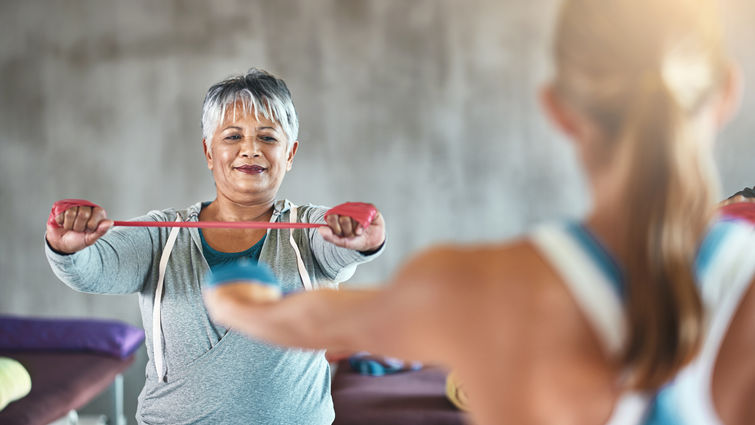
As people age, their bones become weaker, which can cause a higher risk of a fracture during a fall or even an inconsequential bump. According to the International Osteoporosis Foundation, osteoporosis affects an estimated 75 million people in Europe, USA and Japan.
May is National Osteoporosis Month, and Christina Downey, MD, a Rheumatologist at Loma Linda University Health, offers some facts and tips to understand the best way to healthy bones.
Cause — Bone tissue is continually renewing itself. New bone replaces the old bone, allowing the body to maintain bone density, which is at its maximum level when a person is in their 20s. Bone density is maintained from a person’s 20s, until around 35 years of age, when bone begins to weaken. As people — and their bones along with them — age, bone begins to break down faster than it builds. Osteoporosis results if this happens more quickly, resulting in more fragility in the bones. The more fragile or brittle bones are, the easier they crack or break.
Diagnosis — Osteoporosis can be identified by using a scan to measure bone mineral density (BMD). This type of scanning uses dual-energy X-ray absorptiometry (DEXA) — a type of X-ray — and bone densitometry, which measures the density of bone. These scans are noninvasive medical tests that use minimal ionizing radiation.
Who’s at risk — There are both preventable and unpreventable factors that make a person more at risk. Preventable risks include smoking, excessive alcohol intake, limited movement in the day and minimal intake of calcium and vitamin D.
Prevention — Aside from avoiding the preventable risks, an effective way to battle osteoporosis is to do regular weight-bearing exercises. These can not only promote healthy bone, but they can also strengthen the support that muscles provide bones. Activities such as yoga — which can promote balance and flexibility — can also help prevent osteoporosis by reducing the risk of falls and fractures.
While osteoporosis may seem unavoidable and untreatable, prevention can make a huge impact on reducing risks and bone loss.
To make a bone density screening appointment at Loma Linda University Medical Center — or to learn more about locations, insurance and payments, or Medicare and Medi-Cal — visit medical-center.lomalindahealth.org/our-services/rheumatology/make-appointment-rheumatology or call 909-558-2860.
